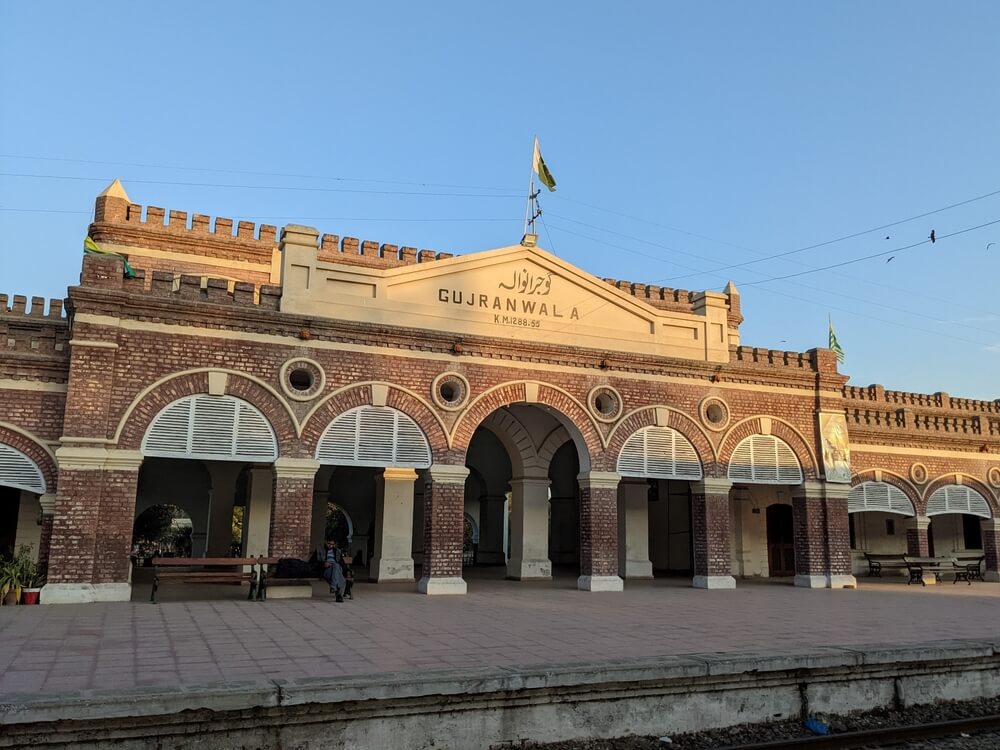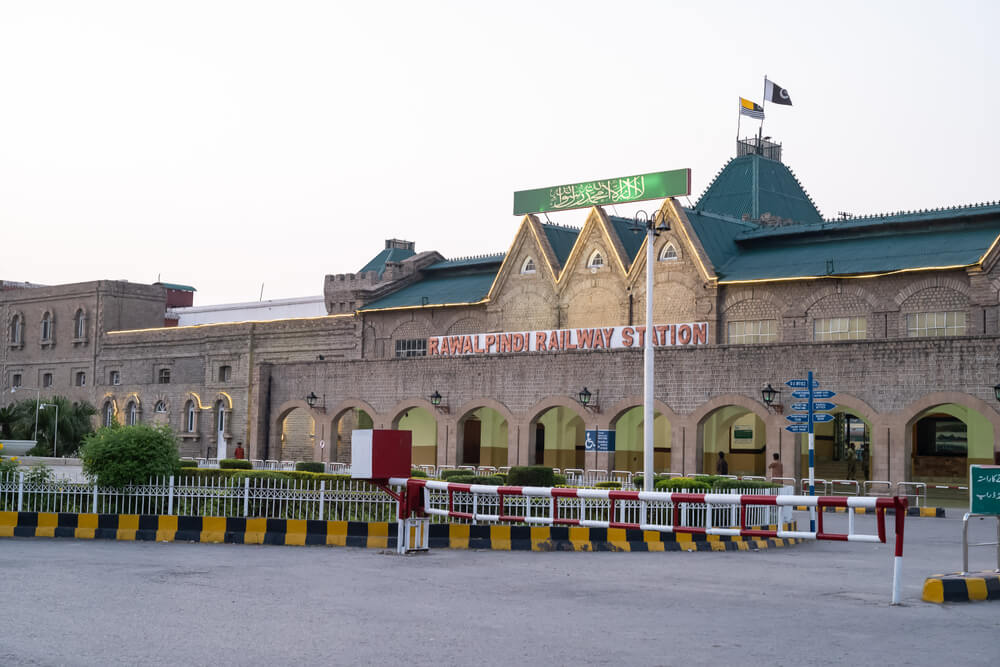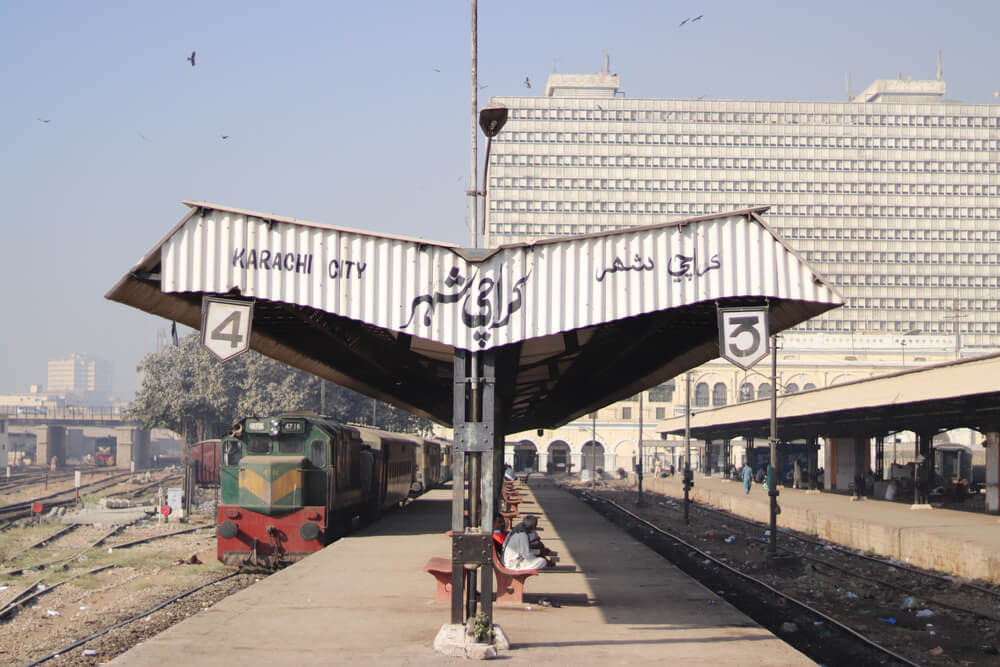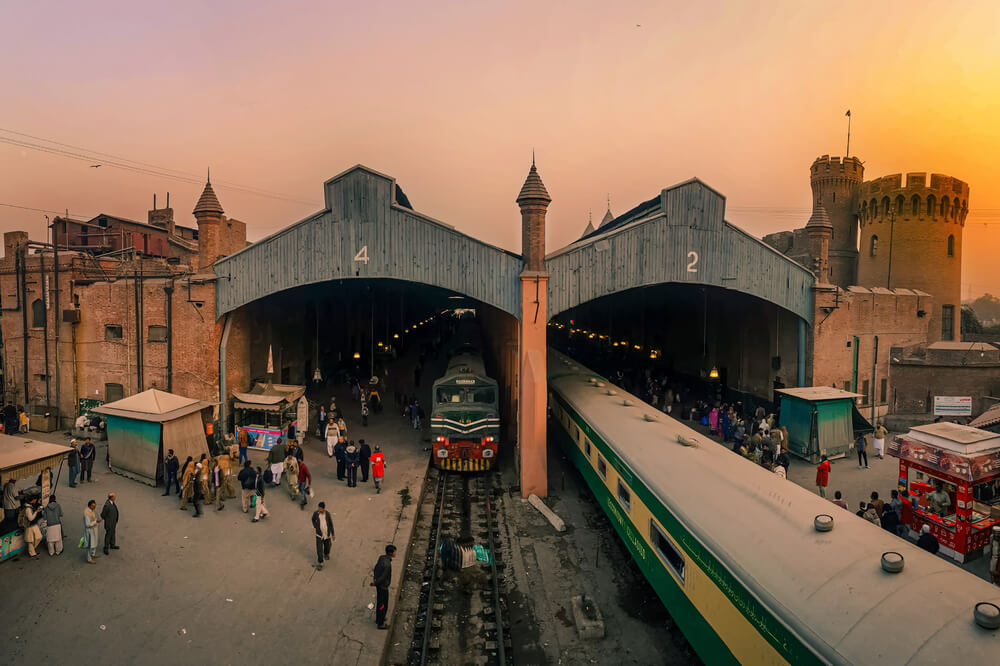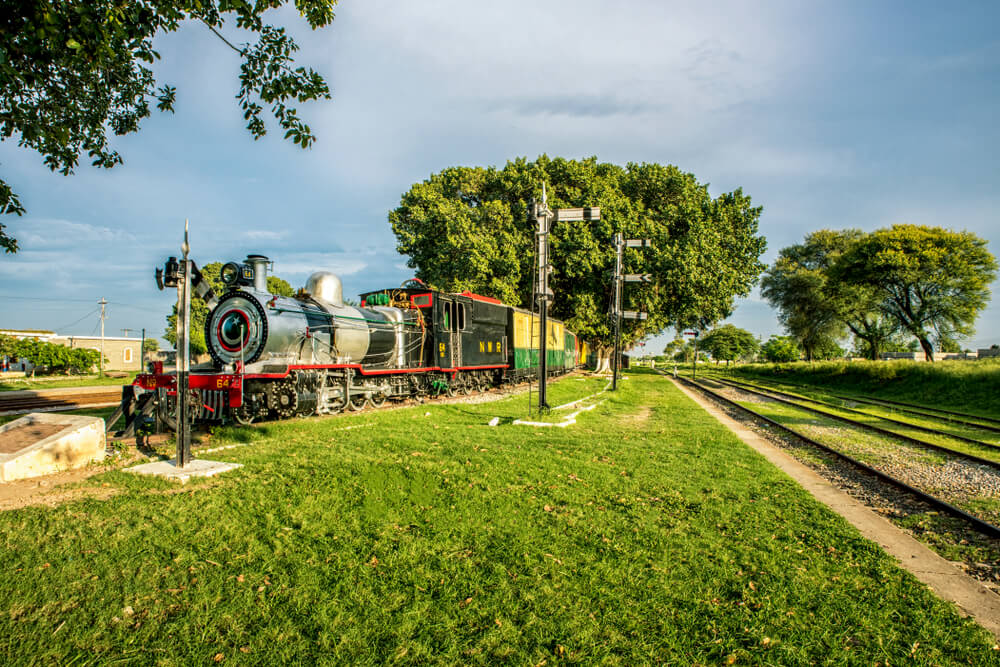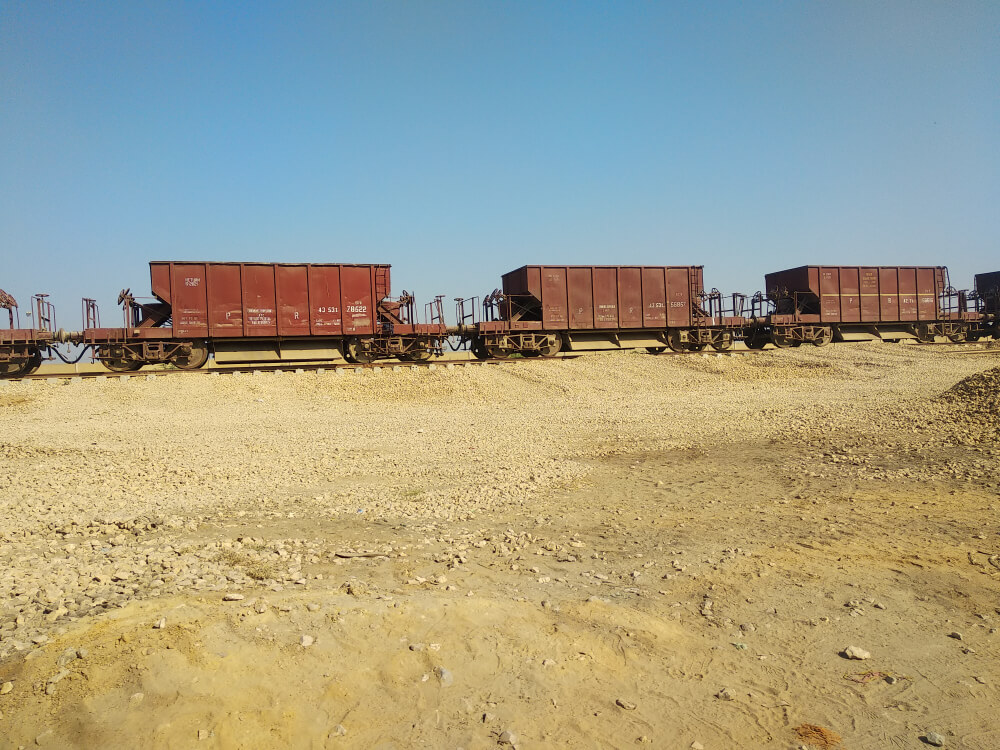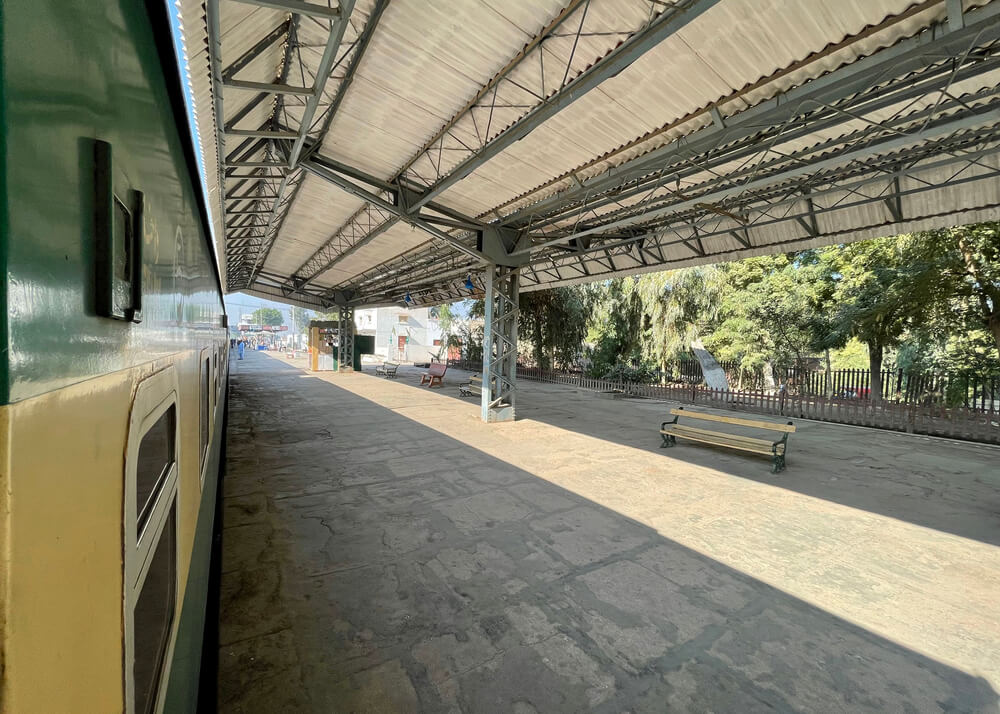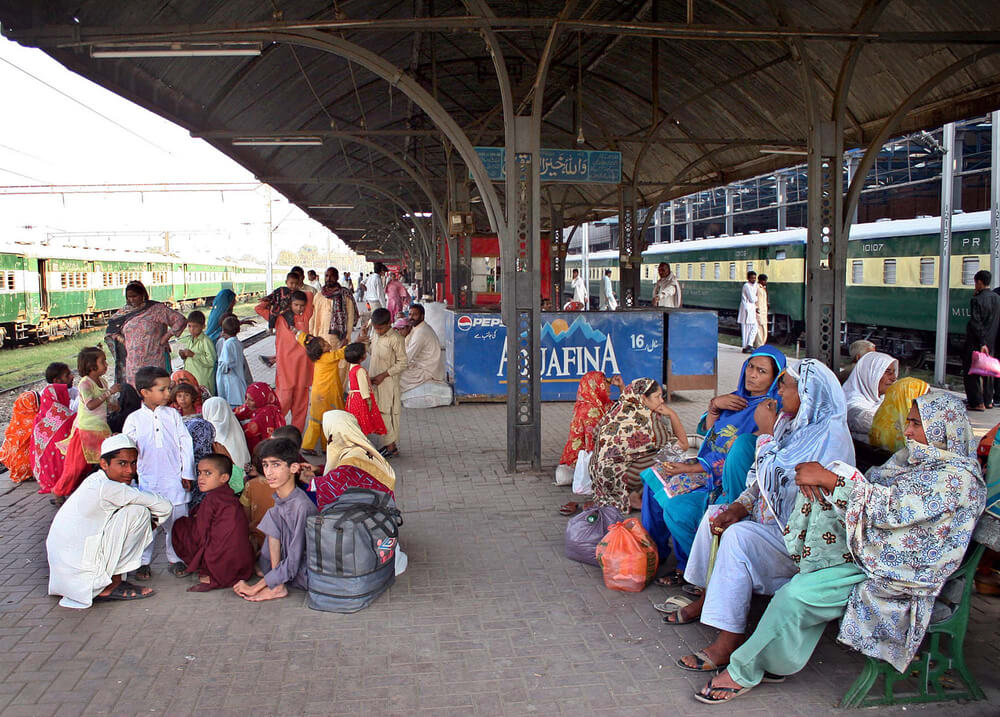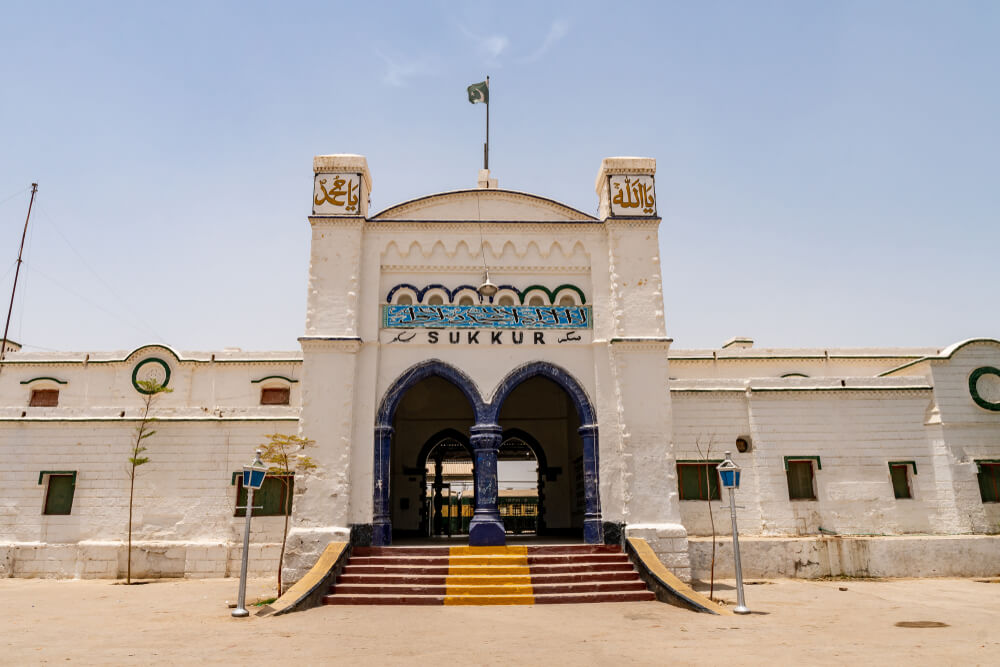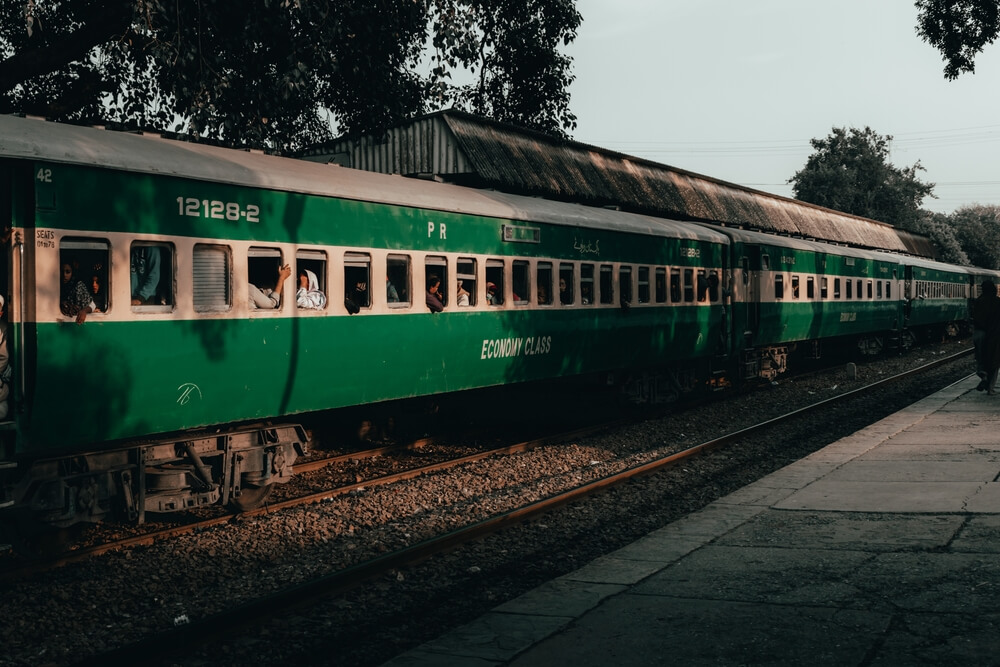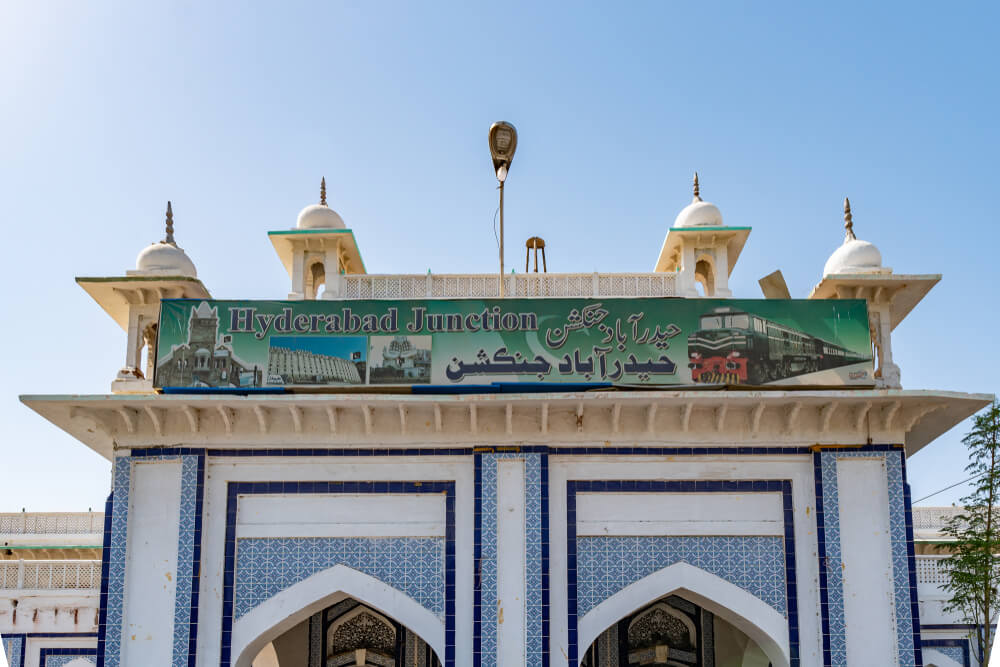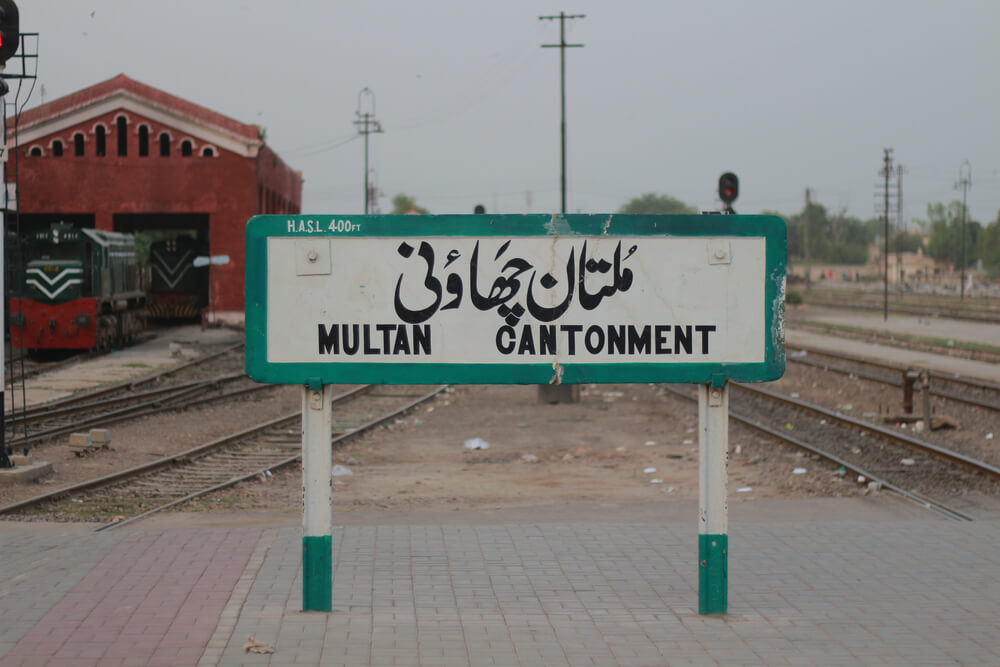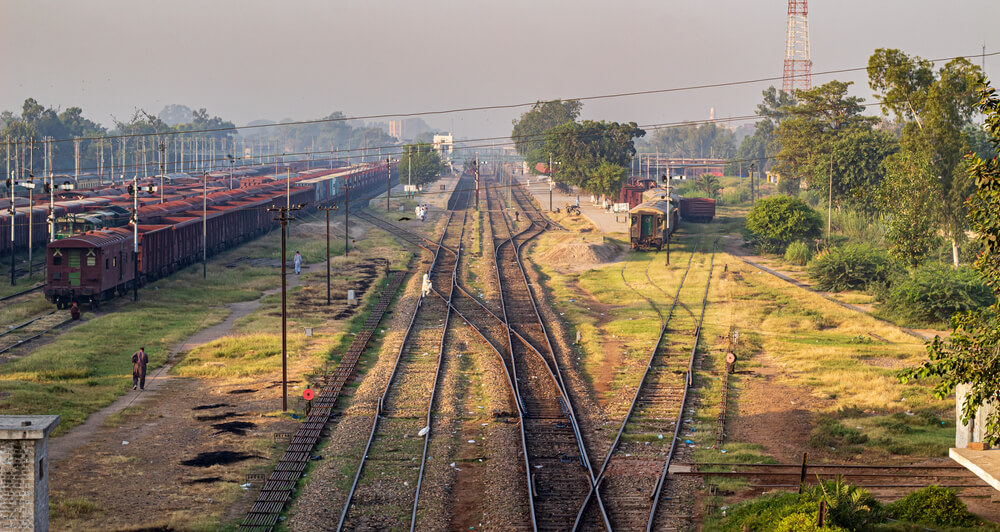Railway Stations in Pakistan
Before embarking on a detailed expansion of the significant Railway Stations of Pakistan, it is necessary to acquire knowledge about the history of Pakistan’s Railways Stations to appreciate them more and learn their cultural significance. Since the advent of railways in 1853, a thorough investigation has been made into the history, engineering, supporting infrastructure, railroad building, and organizational structure of British Indian railways. Because of their individuality and distinctive architectural style, buildings are unique.
Historical structures are significant for a variety of reasons. Its character determines the physical and aesthetic qualities of a building. These qualities describe comprehensively, even on preliminary review without analysis, the design’s quality and significance, the choice of location, and the site of the building.
The diameter, the area, the height, the pleasure factor derived by the spectator, etc., and the sceneries provided by the surroundings. It is crucial to recognize the architectural features of buildings and take note of the lessons. Traditional builders’ skills, knowledge, and ability can help preserve local culture and promote the development of highly sustainable environments. Buildings can represent the past by evoking memories and emotions linked to specific occasions and people. Railway Stations of Pakistan are one prime example.
Buildings never exist in isolation and derive their significance from their surroundings. The aesthetic character of the building, and its cultural significance, especially that of historical buildings, is influenced by choice of the site. It is essential to emphasize the history, site selection, and character that specifies the characteristics of the station architecture and describes it as unique, even though it is one of the millions of building serving a standard function. Because the structure’s location is crucial, the Lahore Railway Station, among others, has been marked as a cultural and architectural hallmark of Pakistan and the Sub-continent.
One of the world’s most cutting-edge circular railway systems was in the city of lights. The authority to order is restoring the Karachi Circular Railway to make it operational. On the other side, Lahore’s train station is a fantastic historical site. The Government has effectively protected the appeal of this historic building. Most of Pakistan’s major railway stations also have amenities, including parking spaces, waiting areas, historical museums, reservation desks with computerized systems, tea shops, and cafeterias to amuse and aid travelers. The following is the List of Railway Stations in Pakistan which are most used and acknowledged.
Lahore Railway Station
One of the busiest and oldest Pakistans Railway Stations is Lahore Railway Station, also referred to as the Lahore railway junction. Thousands of passengers and many singular cargo trains and wagons for massive rail traffic movements use the Lahore Junction Station. In terms of area, it is also Pakistan’s largest railway station.
Before the Mughals, Lahore had a significant historical role to play. From the 16th to the 18th century, Mughal monarchs drew business and inhabitants by designating the city as their province capital.
They bestowed grandeur on the city in the shape of stunning architecture. Sikhs followed in their footsteps, and as the governmental and commercial center of the Ranjeet Singh Kingdom, Lahore was focused on and emphasized due to its significance. (1801–1849). From 1849 to 1947, the British governed Lahore as the final foreign occupiers. They used their construction methods and philosophies to construct numerous buildings.
They quickly understood Lahore’s significance historically and geographically and built the city’s rail system. One of Pakistan’s first railway stations to be constructed was in Lahore. The town attracted much interest during the Mughal era, and the surrounding areas of the walled city saw the construction of several tombs, mosques, and other buildings. Following their footsteps, the Sikh elite primarily constructed gardens on the eastern side of the buildings. Still, they also misappropriated the Mughal structures and stole priceless gems and stones. Travelers under the reign of Ranjeet Singh described the neglected and abandoned suburbs.
Pakistan’s first railway stations served as the North Western Railways headquarters and the junction (which was operated by the Sindh, Punjab, and Delhi Railway Company). This arrangement increased the significance of Lahore and the railroad station. The system includes elements of a train station and a fortified post because it was constructed soon after the fight for IndependenceIndependence in 1857. In 1862, the Punjab Railway Company developed the region’s railway network. All of the administrative infrastructures were housed at the Lahore railway station. Thus, it was a critical location generally.
Lahore’s train station is housed in a building with a medieval appearance. It is surrounded by massive walls, turrets, and enormous holes that can be used to direct cannons and gunfire during combat. The Lahore train station’s distinctive design is entirely attributable to the fact that it was constructed following the 1857 War of Independence. The Station was built with any potential rebellions at that time in mind.
The Station is unquestionably a relic of the extensive railway system built during the British era in the subcontinent in the 20th century. Pakistan Railways is currently responsible for maintaining and running the Lahore train station. Some essential amenities at Lahore Railway Station are waiting areas, restrooms, food outlets, international fast food chains like Mcdonald’s and Pizza Hut, and ticketing services. The largest railway station in Pakistan also has a few retail stores on platforms 1 and 2. Aside from that, the Station offers passenger train reservations that are current and in advance, as well as cargo services for freight and packages.
Additionally, there are overhead bridges that connect the platforms of the train station. Lahore’s railway station passengers will be able to get a taxi quickly. Near the train station, there are designated taxis and rickshaw stands. You can use public transportation services, subject to their availability and operating hours, because the main road is easily accessible from the Lahore train station.
Rawalpindi Railway Station
The Victorian-period Rawalpindi Railway Station, a prominent landmark in Pakistan’s twin cities, is not only a spectacular example of the sub-continental architectural hallmarks in not just the general modern area but also a remnant of a bygone prosperous era.
The yellow stone walls and entryways are arch-shaped of this railway station in Rawalpindi, built more than a century ago in the traditional British style, providing a window into the past.
This old building in the bustling city’s Saddar neighborhood has a nostalgic feel thanks to the kerosene lamps that cover the walls, a grand antique clock by the platforms, and the bell that announces the arrival of trains. Under British authority, this Rawalpindi railroad station was built in 1881 as a component of the Punjab Northern State Railway. Lahore and Peshawar, two of the most important trading centers in the subcontinent, were connected by railroad tracks that the British had constructed in Rawalpindi. The Punjab Northern State Railway and other railroad systems were combined to establish the North Western State Railway in 1886.
Since it was built, domestic and foreign leaders have utilized this railroad stop. In 1919, Afghan King Amanullah Khan also traveled from Landi Kotal to this railway station to meet with the British viceroy to sign a treaty with Afghanistan. And it is due to these historical moments that the nationalist soul of the Pakistani people reveres the significance of these monuments.
When Pakistan gained its IndependenceIndependence in 1947, Rawalpindi’s train station joined Pakistan Railways. During her historic election campaign in 1965, Fatima Jinnah’s Freedom Special train stopped in the city. Former president Ayub Khan, first prime minister Liaquat Ali Khan, and second prime minister Zulfikar Ali Bhutto have also visited and left this Station. Benazir Bhutto, a former prime minister, utilized Rawalpindi Railway Station in 1989 to organize a rail rally from Karachi to the twin cities, which proved to be a major and thus a significant part of her electoral campaign, which drew thousands in her support.
The freight section, passenger rooms, and main offices make up the three sections of the Rawalpindi Railway Station’s main building. The police station and the Railways Club building are next to the main structure. The structure features three gates for regular passengers, cargo, and VVIP visitors. Rawalpindi Railway Station’s most notable characteristics are the big clock and the steam engine in front of the main structure.
Five platforms make up the Station, and steel and wood pedestrian bridges connect them. Small tea shops, snack bars, and bookstalls are scattered throughout the main building. People traveling to faraway locations such as northern Pakistan for whatever reasons can use the waiting areas, lavatories, water coolers, and restrooms at the Rawalpindi Railway Station. Some rooms are made for travelers’ convenience and can be rented at low costs for a few days.
This Station in Rawalpindi serves as the beginning and termination point for several trains. Similar to how practically every train that runs between the northern city of Peshawar and the southern metropolis of Karachi makes a brief stop at this Station. It is also a significant stop on the Lahore-Islamabad route because many travelers headed to Islamabad end here before taking cabs or private cars to their final destinations.
Karachi Cantt Railway Station
The Karachi Railway Station, also known as Karachi Cantt Station, is situated in the city’s central cantonment district. After Karachi City Station, this particular railway station is the second oldest railway station in Karachi city and among the oldest buildings in Pakistan. The Station is a work of exquisite design that conveys much about its fascinating past. Therefore, if you’re interested in learning more about this fantastic historic site in the City of Lights, you’ve come to the correct place.
Frere Street Station was the previous name for Karachi Cantt. Station. Two years were needed to build the spectacular Station building from 1896 to 1898. The Station played a crucial role in the well-known railway system that linked Karachi’s seaport to other regions of the nation. An antique steam engine has been placed at the entrance of this Karachi railway station to honor its illustrious past, as shown in the image above.
The Public Works Department designed the Karachi Railway Station, one of the city’s most prominent structures, in the latter half of the 19th century. This structure still appears as fantastic as it did when it first stood. Currently, Karachi Cantt Station is one of Pakistan’s largest railway stations. It has five platforms and eight train tracks for the convenience of the passengers. The Railway station in Karachi offers a sizable workforce of porters conveniently accessible for loading and unloading big objects and bags. The porters are distinctive and can be easily spotted by their orange and white uniforms.
On the leading platform of this Railway Station, you can also likely find several restaurants, tea shops, and snack shops. At this intersection, overhead bridges neatly connect each of the railroad stations. Depending on your preferences, you can easily book a rickshaw or cab as soon as you arrive at the Karachi Cantt Railway Station. For commuting, there is a tonne of minibusses operating in the region. Also useful for transportation are the best available online accessible services like Uber, Careem, and Bykea.
Attock Khurd Railway Station
The Attock Khurd Railway Station, built in 1880, has a fascinating past and stunning architecture. The Victorian building composed of stone masonry is situated on the shores of the famous Indus River, and the Manglot Mountain Range surrounds it. It is close to the historic 1883 iron girder bridge that links Punjab and Khyber Pakhtunkhwa.
This bridge is one of the most significant strategic and commercial crossings on the Indus between Punjab and K.P. On May 24, 1883, it was officially opened to traffic after being initially designed by Sir Guildford Molesworth. Its construction cost exceeded Rs 3.2 million. Sir Francis Callaghan redesigned the building, which cost Rs2.5 million to rebuild in 1929.
Five spans and two floors make up the bridge. Two spans are 312 feet long, and three spans are 257 feet long. When a new bridge was built on G.T. Road, a few kilometers away from the old one, the lower level was utilized for road traffic and the higher level for railroad traffic. Also nearby is the imposing Attock Fort, which the Mughal Emperor Akbar constructed in 1581. When trains arrive at the Station, the sound of them reverberating through the mountains and the surrounding grandeur must make guests feel as though they have traveled back to the Victorian era.
Railway Station of Golra Sharif
On Islamabad’s Golra Road, there is the Golra Railway Station. It is located in Islamabad’s southwest. In 1882, this Station was built. The Ministry of Railways is the owner. The structure is designed in a Victorian style. It features five large halls. It also features a railroad heritage museum, which intrigues many people.
This beautifully constructed Railway station has for decades not only attracted people by its numerous facilities but because of its elaborately laid out aesthetics which are reminiscent of the sub-continent architectural culture. Here passengers are provided with clean drinking water and various other facilities regarding edibles and fresh drinks. There is also a historical museum close by, which many young people visit. There are waiting rooms where you can wait while you get desi national Pakistani tea from a nearby stall.
Mirpur Khas Railway Station
This junction is a station, and it’s amid Sindh’s Mirpur Khas. It is Pakistan’s fourth-largest railroad station. The Indian border is nearby. It is a powerful platform connecting the railways in Pakistan and India. The Ministry of Railways is the owner of this monumental Railway Station.
The passengers can rest easy knowing that they will be treated well in wait with the many available facilities here; among the many facilities here available, few are:
Reservations security camera
Waiting areas for travelers
Quick Snack Shops
Fresh Water Supply facility
Tea corners
Tuck Shops
Railway Station of Gujranwala
Pakistan’s fifth-largest city has the Gujranwala railway station. Three are located: one in the central city, one in Gujranwala Cantt, and one in the Gujranwala village region. There are four platforms in the city’s main Station. Passengers have access to the same fundamental amenities at all three stations. The Ministry of Railway owns these stations.
The most used and essential Facilities available here are:
Large waiting areas
Food carts, newspaper stands, security cameras, and public restrooms
There are fresh drinks and green and traditional teas to keep passengers busy in wait
Railway Station Rahim Yar Khan
Rahim Yar Khan is home to this Station. The Station needs extensive upkeep and refurbishment because it is so ancient. Although the facility is enormous, there are few passenger amenities. Quetta, Lahore, Sargodha, Khanewal, Bahawalpur, Hyderabad, Karachi, Multan, Peshawar, and Jhung are the principal routes.
This Railway Station contains functional facilities for Passengers of all types of tastes. There are large and spacious waiting areas with seating arrangements, but security measures are also installed to take care of the passenger luggage if they doze off in sleep. Besides all these basics, food and tuck shops with tea stalls are also available here.
Railway Station Hyderabad
In the list of the Stations in Pakistan, the Hyderabad Railway Station is among the busiest. Because of this fact, this particular Station offers more facilities than Most. This is a significant Sindhi railway station. It is a junction station. It has the following lines: The Hyderabad-Badin branch line, the Hyderabad-Khokhrapar branch line, and Karachi-Peshawar Railway Line. It features eight tracks and five platforms. Pakistan’s Ministry of Railways owns the property rights of this Railway. The Government has installed many facilities besides the ones in everyday use. Passengers can easily find washrooms, tuck shops, resting places, or drinks if they wish while waiting for trains.
List of Top Railway Stations in Pakistan
—Karachi Cantt Railway Station
—Lahore Railway Station
—Rawalpindi Railway Station
—Gujranwala Railway Station
—Golra Sharif Railway Station
—Okara Railway Station
—Attock Khurd Railway Station
—Gujrat Railway Station
—Rahim Yar Khan Railway Station
—Hyderabad Railway Station
—Sahiwal Railway Station
—Mirpur Khas Railway Station
—Pattoki Railway Station
—Drigh Road Railway Station
FAQs
1. Which is the first railway station in Pakistan?
The First Railway Station in Pakistan was the Lahore Railway Station.
2. How many Railway stations are in Pakistan?
There are about 625 Railway Stations in Pakistan in current use today.
3. Which is the biggest railway station in Pakistan?
The Lahore Junction Railway Station is the Largest Railway in Pakistan.
4. Which is the most beautiful railway station in Pakistan?
Built by acclaimed British Engineers More than a century ago, the Attock Khurd Station is the most beautiful and Aesthetically pleasing Railway Station in Pakistan.
Conclusion
Among Pakistan’s most famous and well-known Railway Stations, the best existed long before Independence. The Historical Railways are today considered Historic Landmarks, which feature many different and unique historical aspects, remnants, etc., and are greatly admired by the people. The Buildings are old and sturdy, which gives the people an eerie historical vibe, intermixed with the cultural diversity of both the Hindu and Muslim people who thrived in the Sub-continent.
The Railway Stations mark the architectural hallmark movements of the previous two centuries. Since the gradual death of the traditional style, these relics of the past remain the only monuments of history that deserve to be remembered.
Individual Posts
-
Gujranwala Railway Station
-
Rawalpindi Railway Station
-
Karachi Railway Station
-
Lahore Railway Station
-
Golra Railway Station
-
Landhi Railway Station Karachi
-
Chichawatni Railway Station
-
Chaklala Railway Station
-
Drigh Road Railway Station
-
Rahim Yar Khan Railway Station
-
Bahawalpur Railway Station
-
Quetta Railway Station
-
Sukkur Railway Station
-
Gujrat Railway Station
-
Hyderabad Railway Station
-
Multan Railway Station
-
Faisalabad Railway Station

